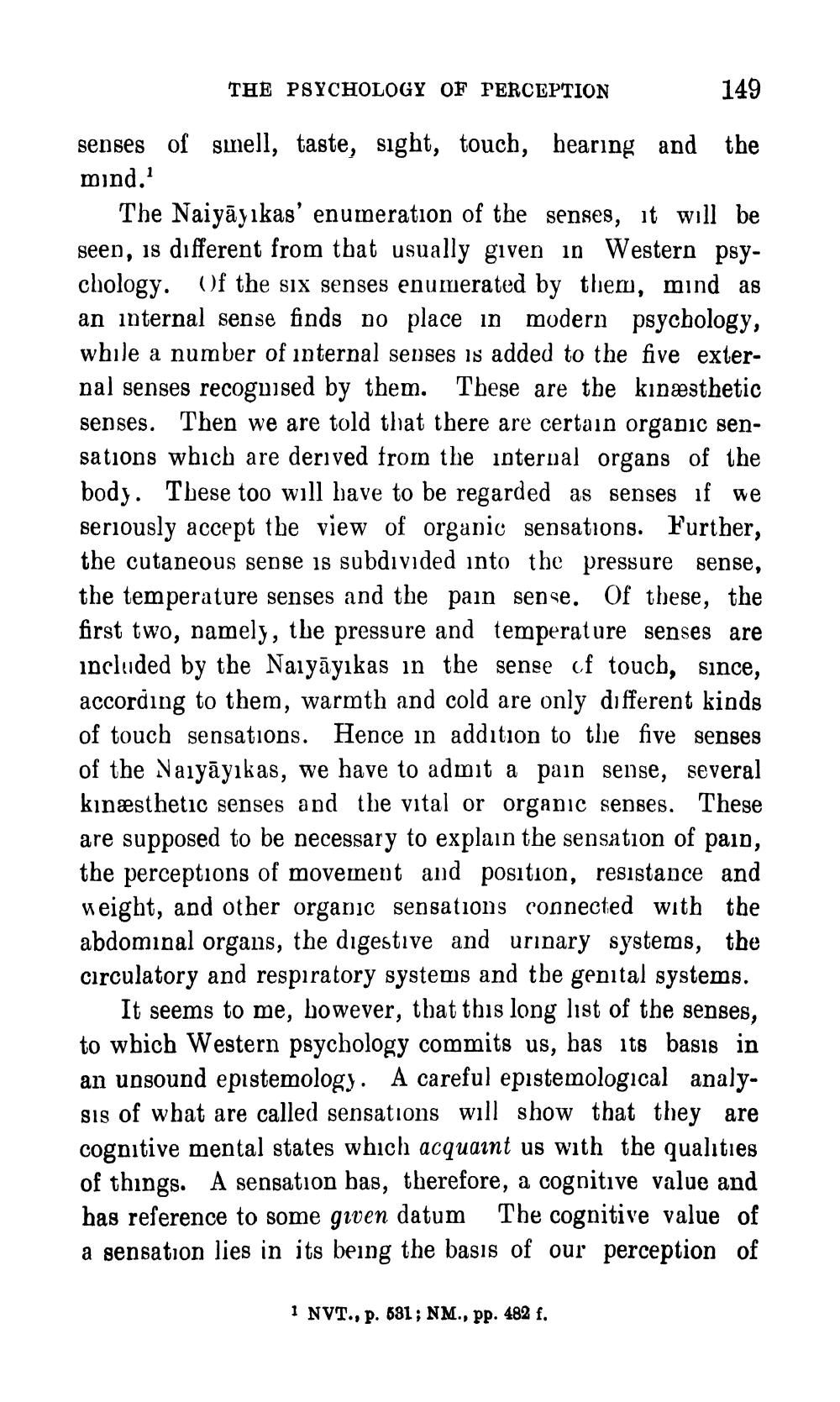________________
THE PSYCHOLOGY OF PERCEPTION
149
senses of smell, taste, sight, touch, hearing and the mind.1
The Naiyayikas' enumeration of the senses, it will be seen, is different from that usually given in Western psychology. Of the six senses enumerated by them, mind as an internal sense finds no place in modern psychology, while a number of internal senses is added to the five external senses recognised by them. These are the kinæsthetic senses. Then we are told that there are certain organic sensations which are derived from the internal organs of the body. These too will have to be regarded as senses if we seriously accept the view of organic sensations. Further, the cutaneous sense is subdivided into the pressure sense, the temperature senses and the pain sense. Of these, the first two, namely, the pressure and temperature senses are included by the Naiyayikas in the sense of touch, since, according to them, warmth and cold are only different kinds of touch sensations. Hence in addition to the five senses of the Naiyayikas, we have to admit a pain sense, several kınæsthetic senses and the vital or organic senses. These are supposed to be necessary to explain the sensation of pain, the perceptions of movement and position, resistance and weight, and other organic sensations connected with the abdominal organs, the digestive and urinary systems, the circulatory and respiratory systems and the genital systems.
It seems to me, however, that this long list of the senses, to which Western psychology commits us, has its basis in an unsound epistemology. A careful epistemological analysis of what are called sensations will show that they are cognitive mental states which acquaint us with the qualities of things. A sensation has, therefore, a cognitive value and has reference to some given datum The cognitive value of a sensation lies in its being the basis of our perception of
1 NVT., p. 531; NM., pp. 482 f.




